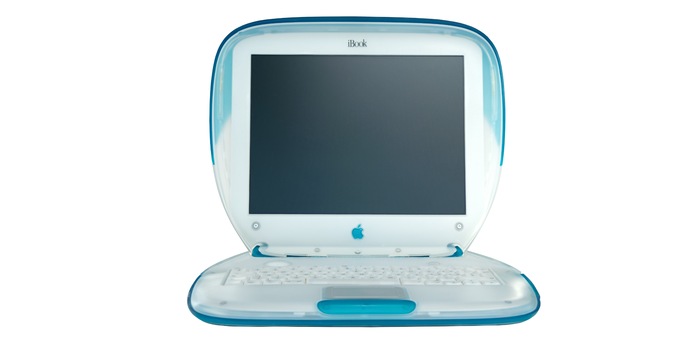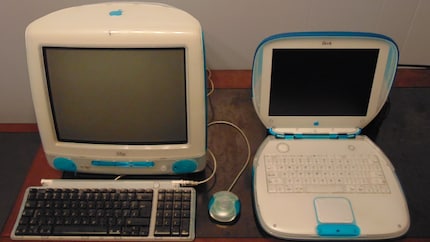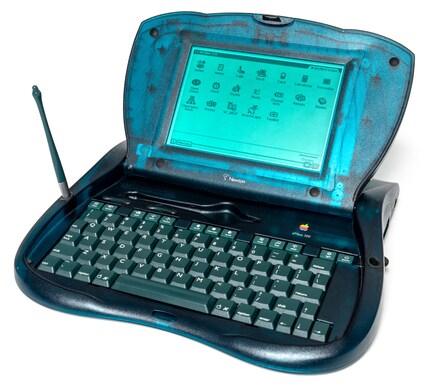
Background information
Where does the ⌘ symbol come from?
by David Lee

On 21 July, 25 years ago, Apple introduced the iBook to the world. Inside and out, it was designed as a portable iMac. But its unusual design had another, long-forgotten predecessor.
The first iBook was basically the iMac in notebook form. It came out a year after the iMac, with the same extravagant design: a mix of white and a bright colour combined with round, playful shapes and transparent casing. The first iBook was nicknamed the Clamshell because of its appearance.

The iBook had a lot in common with the iMac on the inside, too. Both used a PowerPC 750 processor – better known as G3 because it was the third generation of the PowerPC family. For a notebook of the time, the iBook was powerful, despite its moderate price. Steve Jobs even claimed that the graphics chip was the fastest in any notebook. The six-hour battery life and screen resolution of 800 × 600 pixels were also above average. The iBook was supposedly the first notebook that could establish a wireless internet connection via Wi-Fi as standard.
Jobs didn’t talk much about what was really special about the device because it was obvious: its appearance. Notebooks at the time were almost always thick, anthracite-grey blocks. Apple’s PowerBooks were no exception. The iBook looked completely different. Just like the iMac.
But the iMac wasn’t the only source of inspiration. Shortly before Jobs’ return, the Apple eMate 300 came out, which was also rounded, semi-transparent turquoise and had a handle. It was a kind of inexpensive mini laptop.

Very few people have ever seen an eMate 300 in real life. The device was a flop and only lasted a year. It was basically a Newton with an integrated keyboard – and definitely one of the strangest devices Apple has ever released. The whole Newton project was cut by Steve Jobs in 1998. But the design ideas of the eMate 300 lived on in the iBook. Jonathan Ive – later Apple’s chief designer – was behind it.
Although the Clamshell iBook was a success, no successor had a similar design. The second generation of the iBook, which was launched in 2001, looked completely different – it was white. The same year, the new Mac OS X operating system was released, with a look that matched the Clamshell iBook perfectly. And, of course, the first iMac did the same – even the off-white lines on the front are reflected in the Mac OS X windows. Somehow, the ideas of discarded projects always live on.

My interest in IT and writing landed me in tech journalism early on (2000). I want to know how we can use technology without being used. Outside of the office, I’m a keen musician who makes up for lacking talent with excessive enthusiasm.
Interesting facts about products, behind-the-scenes looks at manufacturers and deep-dives on interesting people.
Show all